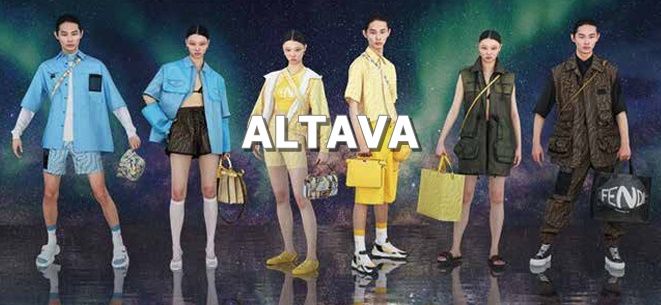ALTAVA, what is it? Discover all the characteristics of this project, its advantages as well as direct access to its official website.
ALTAVA, what are we talking about, here is a project that interacts on several levels and will even be talked about in the metaverse news, find out why?
The global pandemic fractured the fashion and retail industries, sending a clear message to its constituents: digitalize or die.
This has proven to be the case, particularly for legacy players that entered the COVID-19 era with weak balance sheets and waning customer bases. But many brands and retailers responded by accelerating their digital efforts, accomplishing in months a level of transformation they had originally planned to roll out over years. In a relatively short period of time, a plethora of innovative tech solutions emerged, bringing efficiencies and improved performance across the value chain.
On the customer side, as consumers spent more time at home, we witnessed explosive online growth and a dramatic convergence of media, entertainment and retail under the umbrella of Web3.0 or The Metaverse – an ecosystem of virtual worlds, new partnerships, economic and commercial structures, currencies and DAOs (Democratized Autonomous Organizations).
The metaverse is now where virtual content, products, services and experiences are co-created without physical constraints, and are fully trackable and democratically monetized.
At a macro level, four industry-wide themes have emerged:
- AI and data analytics for insights across all functions in the fashion value chain, enabling predictive and real-time decision-making, and increasingly personalized and interactive customer engagement;
- 3D digital assets emerged as the building blocks for efficient and sustainable processes, and the starting point for virtual products and experiences;
- Technology innovation pursuing an industry-wide sustainability agenda: more virtual, less physical, make only what there is demand for;
- The metaverse as the next frontier for brands and retailers via three key pathways: 1. Technology tools that power the metaverse; 2. Perfecting the end- user experience; and 3. Driving transparency through trackability and accountability.
ALTAVA is at the forefront of this revolution. As luxury brands accelerate their digital agendas, we see – finally – their embrace of virtual assets and experiences, blockchain capabilities and cryptocurrencies as key components of the new retail reality, first in pursuit of more efficient processes, trackability and provenance, and more recently through the explosion of collaborations in gamification, metahumans, and Non-Fungible Tokens (NFTs).

ALTAVA, its goals:
ALTAVA’s goal is to leverage its cutting-edge technologies and partnerships with some of the world’s leading luxury brands to launch a new digital market that offers a unique curated collection of NFTs and other virtual assets. Further, we aim to maximize the utility of these assets by ensuring interoperability within our gamified social commerce platform for luxury fashion, ALTAVA Worlds of You, as well as in multiple other virtual worlds in the metaverse.
Blockchain in Luxury
The integration of blockchain technology into the luxury fashion segment has been a long time coming. In recent years, LVMH, Cartier and Prada have been lauded for creating their own 2 blockchain capability in the form of the AURA Blockchain Consortium.
This was driven principally as a defense against counterfeiting, which represents a US$450B annual impact on the fashion industry. But since not everyone can be part of AURA, other platforms launched to provide fashion brands with a more democratic access to similar capabilities, including ventures such as LUKSO, with its own crypto currency (LYX); and Luxandia, with its own crypto currency (TLX).
The reality is that there is a commercial imperative for brands to use blockchain because it protects the value of creative output, enables every designer or collaborator to monetize correctly, and provides insight into the long-tail of products (ownership, geolocations, financial value over time, product life).
By contrast, under current industry practices the product is lost from sight after it is sold at retail, and there is no way to track its lifecycle – which in turn enables fake products to be inserted into a brand’s value chain. On that basis alone, blockchain has rightly been recognized as a necessary default for all smart creatives, not just the most inventive, innovative or high value ones.
ALTAVA aims to go much further than platforms such as Aura. This technology enables to create digital twins of physical luxury items and mint them as NFT that can be utilized by their owners across a wide array of virtual worlds within the metaverse. Since by definition, an NFT is blockchain supported, the provenance, trading and usage of these assets is completely transparent and ensures the creator is accurately compensated.